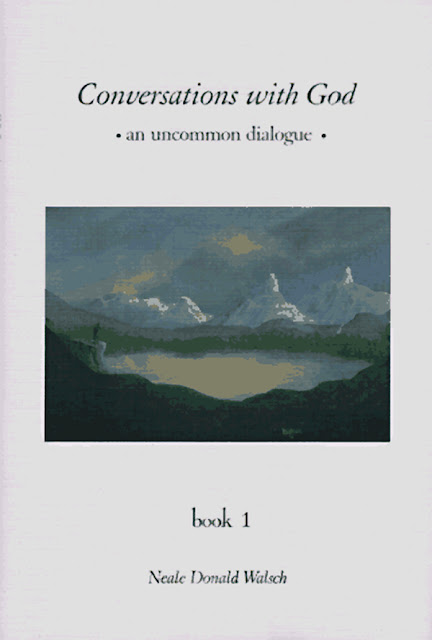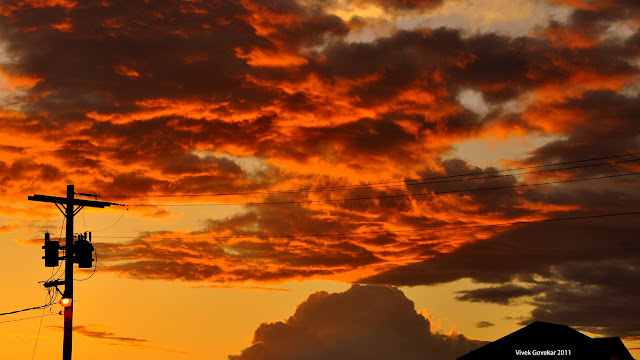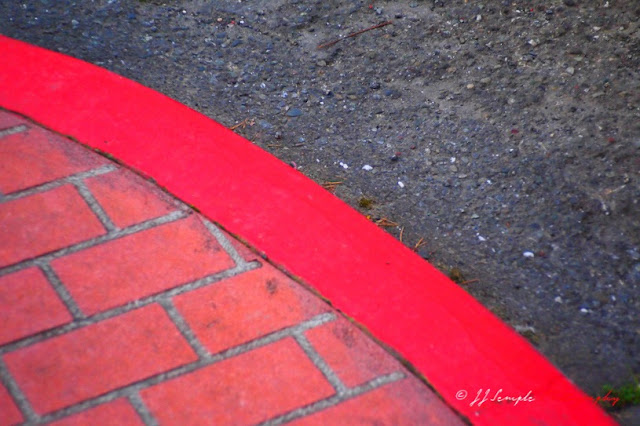Individuals who undergo a Near Death Experience (NDE) report a number of effects encountered during and after the experience. The same goes for those who undergo a Kundalini experience. What's interesting is that some, but not all, of the effects are the same; there's a definite overlap, even though they are different experiences.
For the moment, however, no physical science is able to attest to the certainty of the effects as reported. They lie outside what is perceivable with our five physical senses, and therefore what is perceivable with scientific instruments at this time. In other words, the effects experienced during these events take place within the metaphysical (meaning beyond the physical) dimension. In the future, who knows? Perhaps instruments will be capable of penetrating beyond the physical universe. It is not a question of belief; it’s a question of technology.
Anyway, because NDE reports are so similar — in spite of the origins, locations, backgrounds of the participants — various university psychology departments and university hospitals are now saying that these anecdotal accounts are not only NOT imaginary, but also that the subject is worth investigating. First among these is Doctor Sam Parnia:
According to Sri Ramakrishna, “A man's spiritual consciousness is not awakened unless his Kundalini is aroused.” Kundalini is the motivating catalyst behind the transcendent experience. It's the key to our changing our state of being. How? Kundalini stimulates neuroplastic activity in the brain, and consequently, the ability to see and experience life beyond the material, physical dimension.
How do we know this? The effects induced by Kundalini are akin to those of the near death experience (the NDE). Kundalini shares a subset of effects with the NDE. NDErs frequently return from their experience with residual knowledge of the metaphysical dimension. What’s striking is that these types of experiences are commonplace, and, one to another, very similar in nature, in spite of the individual's age, cultural background, geographical location, or religion. The individual returns with a greater understanding of his/her connectedness, enhanced creative impulses, the experience of being bathed in a strong white light, and the intense certainty that there is no death. According to Moshiya de Broek:
Cosmic Consciousness
The NDE offers a strong argument for disembodied cosmic consciousness. Again Moshiya de Broek:
If this is true, it means that our consciousness, or some portion our consciousness, resides outside the brain, outside the body, in a metaphysical dimension, unseen by normal people. If a person is deemed clinically dead, yet is able to observe goings-on in the physical world as well as the metaphysical, there has to be a strong case for disembodied cosmic consciousness. It would be one thing if a report of this nature came from a single individual, but that is not the case. Thousands, as cited above, have reported the same states, the same effects. And if NDErs can observe metaphysical activity during metanormal states, why shouldn't the Kundalini practitioner, who shares many of the same states and effects, be capable of this, and even much more? If NDErs can experience super-consciousness in a "brain-dead" state, why not suppose that Kundalini practitioners, with their super-stimulated brains, could experience a much greater set of metanormal effects? And if they do experience super- or cosmic-consciousness, wouldn't this activity actually transform DNA over time. A super form of neuroplasticity that ultimately influences evolution by modifying DNA. All these changes in the brain are the result of an evolving consciousness, all of them eventually passed along to future beings in our DNA.
How does the NDE compare with Kundalini?
People who have experienced one or the other phenomenon share many of the effects mentioned above. However, in the case of permanent Kundalini, there are some effects that the NDE does not share. Kundalini triggers a superset of metanormal effects. By stimulating neuroplastic activity, Kundalini triggers autonomic self-healing mechanisms, restores health, and transforms consciousness. As opposed to the NDE, with Kundalini, brain cell regeneration is a constant. Why? The Kundalini process uses distilled sexual energy to refresh brain cells. Kundalini revitalizes the entire nervous system. It would seem impossible for an Alzheimer’s disease to exist in a permanently awakened Kundalini body. This sounds like an extreme statement, obviously one in need of peer review. But if we concede to the Kundalini practitioner the ability to experience metaphysical activity, especially since they, by definition, live in a permanently metanormal state, shouldn't a brain stimulated by life force energy of sexual sublimation evolve? And shouldn't these evolutionary characteristics be passed along to future generations?
What's more, with Kundalini there is a change in the decision-making and lifestyle processes. That is what happens with a change of consciousness. The old individual is reborn in a Karmic sense. He or she is able to see and understand, sometimes for the first time, the moral and logical implications of each decision. Gone, one-by-one, are the old addictions, the old habits, the old conditioning, and the old emotional prisons. Finally, this new state of consciousness effects an overhaul of human nature. Over time our perverse and negative emotions vanish. We are no longer cogs in the machine.
For the moment, however, no physical science is able to attest to the certainty of the effects as reported. They lie outside what is perceivable with our five physical senses, and therefore what is perceivable with scientific instruments at this time. In other words, the effects experienced during these events take place within the metaphysical (meaning beyond the physical) dimension. In the future, who knows? Perhaps instruments will be capable of penetrating beyond the physical universe. It is not a question of belief; it’s a question of technology.
Anyway, because NDE reports are so similar — in spite of the origins, locations, backgrounds of the participants — various university psychology departments and university hospitals are now saying that these anecdotal accounts are not only NOT imaginary, but also that the subject is worth investigating. First among these is Doctor Sam Parnia:
"Not just my study, but four others, all demonstrated the same thing: People have memories and recollections. Combined with anecdotal reports from all over the world, from people who see things accurately and remember them, it suggests this needs to be studied in more detail."As a corollary to this evidence, it follows that because the NDE and Kundalini share effects, it is worth studying the Kundalini experience as well, using all and every current and future method/technique.
According to Sri Ramakrishna, “A man's spiritual consciousness is not awakened unless his Kundalini is aroused.” Kundalini is the motivating catalyst behind the transcendent experience. It's the key to our changing our state of being. How? Kundalini stimulates neuroplastic activity in the brain, and consequently, the ability to see and experience life beyond the material, physical dimension.
How do we know this? The effects induced by Kundalini are akin to those of the near death experience (the NDE). Kundalini shares a subset of effects with the NDE. NDErs frequently return from their experience with residual knowledge of the metaphysical dimension. What’s striking is that these types of experiences are commonplace, and, one to another, very similar in nature, in spite of the individual's age, cultural background, geographical location, or religion. The individual returns with a greater understanding of his/her connectedness, enhanced creative impulses, the experience of being bathed in a strong white light, and the intense certainty that there is no death. According to Moshiya de Broek:
"The common points are: traveling through a tunnel, life passing in revue and meeting loved ones. Most of them also speak of a heightened awareness in which they seem to enter an all-knowing consciousness that seems to know the answer to each question mankind has ever asked."Moreover, the individual often returns with a feeling of no longer belonging to the physical world, or at least a feeling of the severe limitations of this world. Kundalini shares all these effects.
Cosmic Consciousness
The NDE offers a strong argument for disembodied cosmic consciousness. Again Moshiya de Broek:
"These experiences happen during a time that the heart and brain show no activity on either the ECG or EEG scales (a flatliner). That some might argue the stop of blood flow does not mean there cannot be some weak electrical activity deep within the brain — an EEG only measures the electrical activity on the surface of the brain — is for the moment beside the point. They should ask, according to neuroscience, is there enough brain activity to constitute being consciously aware? Decidedly, those types of brain activities appear totally absent in these patients. In fact, there is another problem which would seem to contradict present scientific insights: at a time when awareness should be reduced, if not totally absent, patients actually experience a clearer, wider awareness both in seeing and in hearing, although with a lessened brain activity. Present science says that it is improbable for someone to experience awareness with the absence of measurable brain activity."
 |
| In the redwoods |
If this is true, it means that our consciousness, or some portion our consciousness, resides outside the brain, outside the body, in a metaphysical dimension, unseen by normal people. If a person is deemed clinically dead, yet is able to observe goings-on in the physical world as well as the metaphysical, there has to be a strong case for disembodied cosmic consciousness. It would be one thing if a report of this nature came from a single individual, but that is not the case. Thousands, as cited above, have reported the same states, the same effects. And if NDErs can observe metaphysical activity during metanormal states, why shouldn't the Kundalini practitioner, who shares many of the same states and effects, be capable of this, and even much more? If NDErs can experience super-consciousness in a "brain-dead" state, why not suppose that Kundalini practitioners, with their super-stimulated brains, could experience a much greater set of metanormal effects? And if they do experience super- or cosmic-consciousness, wouldn't this activity actually transform DNA over time. A super form of neuroplasticity that ultimately influences evolution by modifying DNA. All these changes in the brain are the result of an evolving consciousness, all of them eventually passed along to future beings in our DNA.
How does the NDE compare with Kundalini?
People who have experienced one or the other phenomenon share many of the effects mentioned above. However, in the case of permanent Kundalini, there are some effects that the NDE does not share. Kundalini triggers a superset of metanormal effects. By stimulating neuroplastic activity, Kundalini triggers autonomic self-healing mechanisms, restores health, and transforms consciousness. As opposed to the NDE, with Kundalini, brain cell regeneration is a constant. Why? The Kundalini process uses distilled sexual energy to refresh brain cells. Kundalini revitalizes the entire nervous system. It would seem impossible for an Alzheimer’s disease to exist in a permanently awakened Kundalini body. This sounds like an extreme statement, obviously one in need of peer review. But if we concede to the Kundalini practitioner the ability to experience metaphysical activity, especially since they, by definition, live in a permanently metanormal state, shouldn't a brain stimulated by life force energy of sexual sublimation evolve? And shouldn't these evolutionary characteristics be passed along to future generations?
What's more, with Kundalini there is a change in the decision-making and lifestyle processes. That is what happens with a change of consciousness. The old individual is reborn in a Karmic sense. He or she is able to see and understand, sometimes for the first time, the moral and logical implications of each decision. Gone, one-by-one, are the old addictions, the old habits, the old conditioning, and the old emotional prisons. Finally, this new state of consciousness effects an overhaul of human nature. Over time our perverse and negative emotions vanish. We are no longer cogs in the machine.







